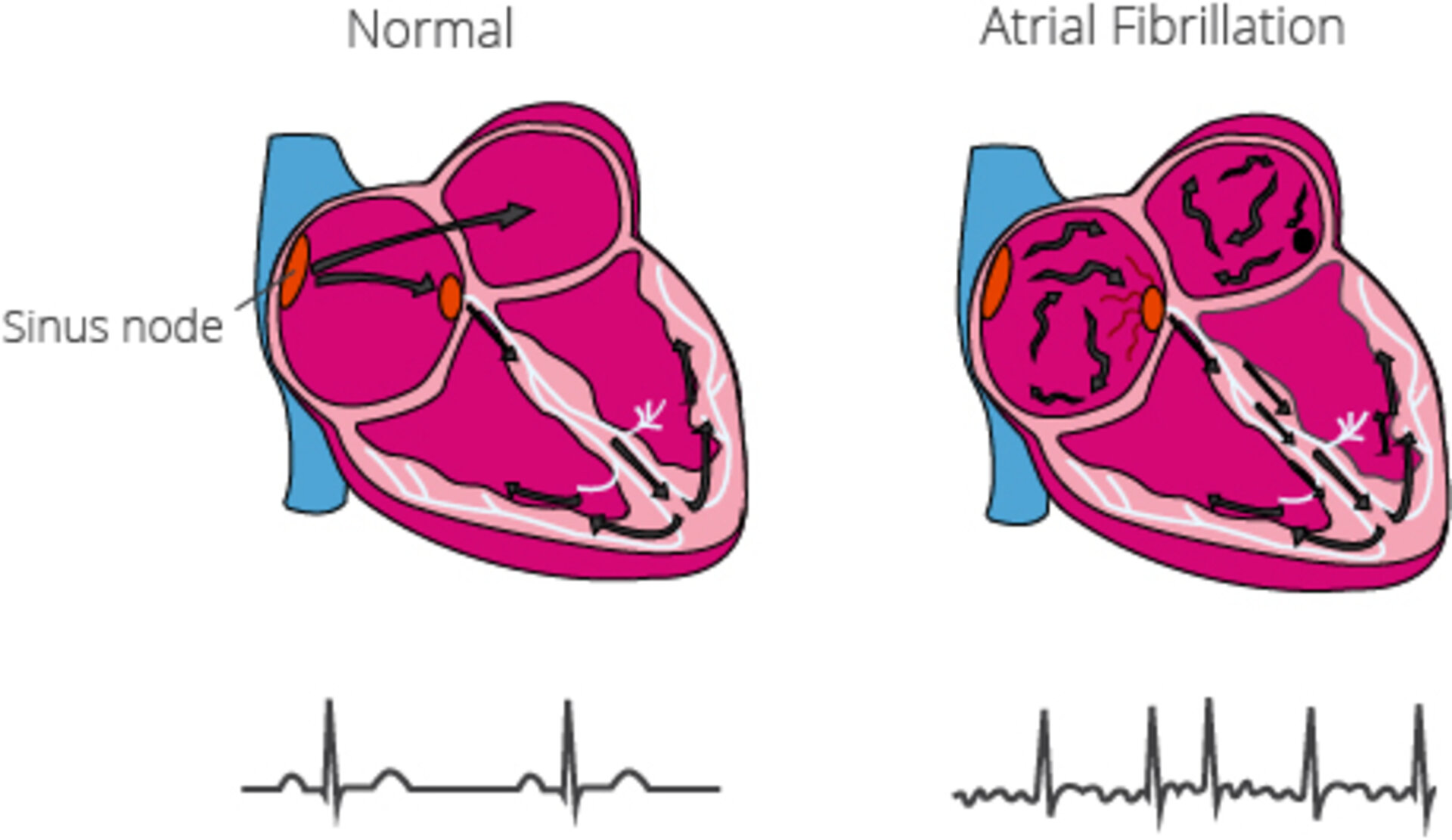Atrial Fibrillation
Atrial fibrillation is an irregular and often very rapid heart rhythm (arrhythmia) that can lead to blood clots in the heart. A-fib increases the risk of stroke, heart failure and other heart-related complications.
Causes of Atrial Fibrillation
Damage to, or an abnormality of, the heart is the usual cause of atrial fibrillation. Damage usually results from the following:
- High blood pressure
- Heart attack
- Coronary artery disease
- Viral infection
- Sleep apnea
- Metabolic imbalance
- Prior heart surgery
Heart abnormalities that can lead to atrial fibrillation include various congenital heart defects, and abnormal heart valves.
Symptoms of Atrial Fibrillation
It is possible that atrial fibrillation is asymptomatic. However, in many cases, atrial fibrillation results in the following symptoms:
- Palpitations
- Chest pain
- Fatigue
- Dizziness
- Lightheadedness
- Shortness of breath
- Confusion
A reduced ability to exercise is also a symptom of atrial fibrillation.
Diagnosis of Atrial Fibrillation
To diagnose atrial fibrillation, a physical examination of the patient is performed, and a medical history is taken. Various tests, including electrocardiogram, echocardiogram, blood tests and chest X-rays, are typically performed.
Types of Atrial Fibrillation
Types of atrial fibrillation are based on how long the atrial fibrillation lasts. With paroxysmal fibrillation, the heart regains normal rhythm without treatment within 7 days of when the arrhythmia began. With persistent atrial fibrillation, the irregular rhythm lasts longer than 7 days and does not correct itself. Treatment, however, can restore the normal rhythm. With permanent atrial fibrillation, the irregular rhythm lasts indefinitely, even with treatment.
Treatment for Atrial Fibrillation
Treatment for atrial fibrillation focuses on restoring a normal heart rate or controlling the heart rate to keep it from beating too fast. Stroke prevention is also a major goal of treatment. The type of treatment depends on the severity of the condition, but includes the following:
- Electrical cardioversion to reset heart rate
- Blood-thinning medications
- Anti-arrhythmic drugs
- Atrioventricular node ablation
- Catheter ablation
- Atrial pacemaker
If atrial fibrillation is caused by an underlying condition, treating the condition may be sufficient to restore normal heart rhythm.